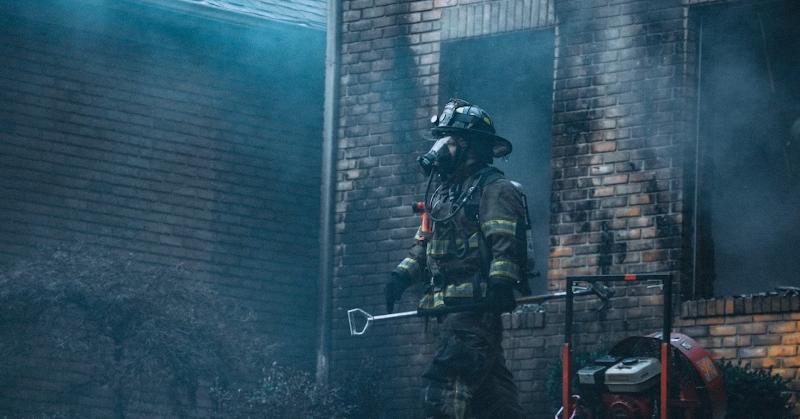To know the plenteous risks involved in being a fireman, one must take up the profession. Firefighting has rightfully been considered one of the most dangerous job profiles in the world. On any given day, firefighters must risk their lives as they attempt to save others.
To date, the infamous 9/11 incident at the World Trade Center tops the list of events that led to a significant number of firefighter deaths. As many as 340 of them succumbed to severe burns and injuries.
According to the National Firefighter Protection Association (NFPA), 96 firemen lost their lives while on duty in 2022. Most of these deaths were caused due to cardiac issues or traumatic injuries. The price of performing one of the most heroic jobs in the world is exposure to a horde of occupational hazards.
In this article, we will discuss the three most dangerous occupational hazards (besides third-degree burns) that firefighters must war against.
Carbon Monoxide (CO)
Carbon monoxide, an odorless and colorless gas, is widely present in smoke. It is also known as the ‘silent killer.’ When inhaled, CO gets absorbed into the bloodstream rapidly. Then, the gas enters red blood cells and binds with hemoglobin, leading to the formation of carboxyhemoglobin.
As a result of this formation, dangerously low levels of oxygen are delivered to the organs and tissues. Body parts with high metabolic rates first feel the effects of CO poisoning, including the brain and the heart.
If not addressed immediately, a firefighter with CO poisoning will experience brain dysfunction, progressive heart disease, or end up in a coma. Death is also not an uncommon occurrence in worst-case scenarios.
According to the International Association of Firefighters, almost every emergency scene has high levels of CO in the form of smoke. The levels may be 50 parts per million (ppm) or above. Even the lowest levels can cause mild neurological impairment in the beginning.
But, the situation can quickly turn fatal if the firefighter is exposed for several minutes. High CO levels are present in the knockdown and overhaul phases of a mission. Some ways in which firefighters can protect themselves against CO exposure include properly wearing a self-contained breathing apparatus (SCBA).
Also, they can carry a CO monitoring device to detect the source and identify the levels of CO in the environment.
Per-and Polyfluoroalkyl Substances (PFAS)
As of late, per- and polyfluoroalkyl substances or PFAS have been making the headlines (and not for good reasons). A complex group of 12,000+ chemicals, PFAS are anything but innocent. Also known as forever chemicals (as they indefinitely stay within the soil or human body), PFAS can cause much damage.
These chemicals are used to manufacture AFFF or Aqueous Film Forming Foam. Firefighters use this foam to extinguish Class B fires that break out due to liquid fuels like jet fuel. However, the foam’s toxicity is such that there have been rising cases of cancer among firefighters.
The tragic part is that firefighters were never informed or aware of the health risks involved with AFFF. In 2017, many started filing a lawsuit against PFAS-based firefighting foam manufacturers, with 3M being the primary defendant. By 2018, these cases were consolidated into a class-action multi-district litigation (MDL).
The most common injuries included cancers of the bladder, kidneys, and testicles. Besides personal injuries, TruLaw states that municipalities filed a water contamination lawsuit since PFAS were polluting water supply systems.
Though 3M has settled water contamination cases with $10.3 billion, personal injury lawsuits are yet to be settled. As per the latest AFFF lawsuit update, the first Bellwether trial is set to begin by early 2024. Lawyers expect settlements to be made by late 2024 or early 2025.
Besides firefighting foam, PFAS have also been found as a coating on firefighting gear as a water and oil repellent. Though no substitute has been found for PFAS on firefighting gear, fluorine-free foam alternatives have started emerging for firefighter safety.
Asbestos
Asbestos is a fibrous mineral that is highly durable and equally toxic. This mineral has been used for decades to manufacture construction materials. By the late 1970s, the use of asbestos in construction was completely and permanently banned.
However, all homes constructed before this period had asbestos as a part of their raw materials. When older buildings catch fire, they release huge amounts of asbestos fibers, putting firefighters at risk of exposure.
Some of the construction materials containing asbestos include drywall board, paint, masonry cement powder, electric wiring, and roofing shingles. The fibers are usually mingled with the surrounding air/smoke and ash.
The main dangers of breathing in asbestos fibers include lung cancer, asbestosis, and mesothelioma. In some cases, the exposed individual may develop cancers of the colon and stomach. One way to have some protection against this occupational hazard is a self-contained breathing apparatus.
Firefighters must wear it while opening walls, rummaging through debris, or pulling down ceilings.
Closing Thoughts
As firefighters wage war with hazards inherent to their job, technologies to protect their well-being are on the rise. These technologies work by making firemen’s tasks easier and more efficient.
For instance – virtual reality (VR) is being used for training purposes to create life-like simulations. This way, firefighters do not need to face real fires during training sessions.
Portable ultrasound devices are enabling doctors to help firefighters who might get injured on the field due to heart, abdominal, or lung issues. Likewise, drones are helping crew members locate highly dangerous zones as the unmanned aerial devices can easily sneak into hard-to-reach places.
With tech support and rigorous research on non-toxic alternatives, the future of firefighting will be safer for everyone involved.
